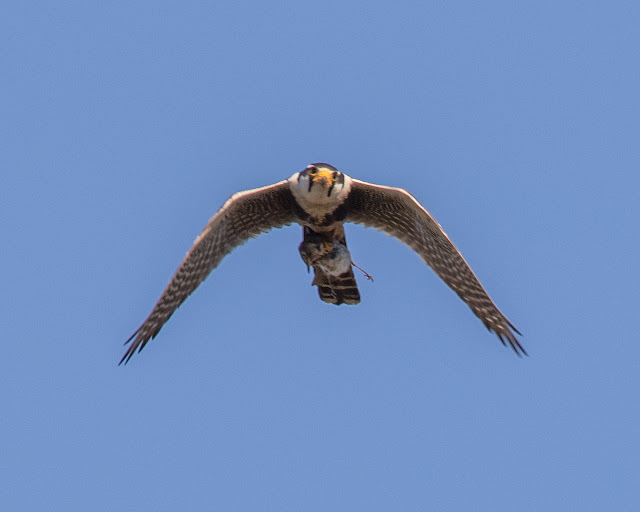We made a scan of that location and, sure enough, spotted it on the wire. We spent some time watching and photographing it from a distance and saw it sally out after prey several times. We saw several successful kills that it made.
In this view, the falcon is sizing up a target, bobbing its head up and down and side to side. I assume this is to get a better distance measure on the target. It then launched out across the marsh towards the seashore.
I expected a short flight but it dropped down almost a half mile away and came up with another shorebird chick and flew back to its perch to eat. That is some pretty impressive eyesight.
About this time, a wildlife biologist for one of the park services approached us making sure we were keeping our distance. He explained that this falcon was the male of a pair of unbanded (not one of the ones released on the island) birds nesting nearby. He pointed out the nest location out over the marsh in a low thicket bush. About that time, the female flew up from the nest to join its mate for a share of the most recent kill. Danielle read that as the chicks are being raised, the male will have to make 30 such kills a day to keep the family fed.
Later in the week, we stopped to watch again and found the male perched on the lower branches of the nest bush. He eventually flew back up to this perch.










No comments:
Post a Comment
Relevant comments and questions are welcome but submissions with spam-links will not be published.